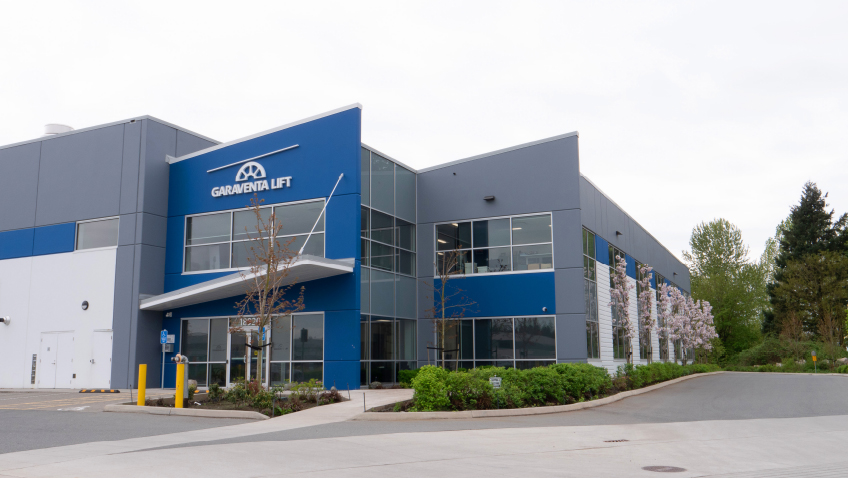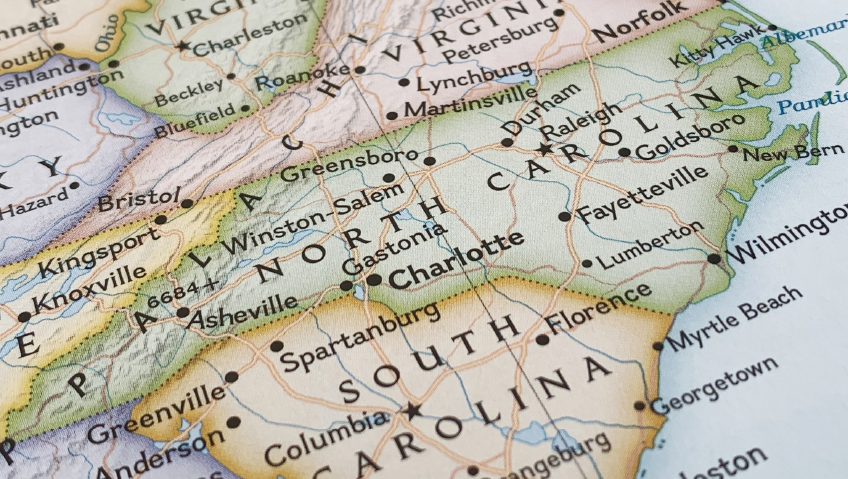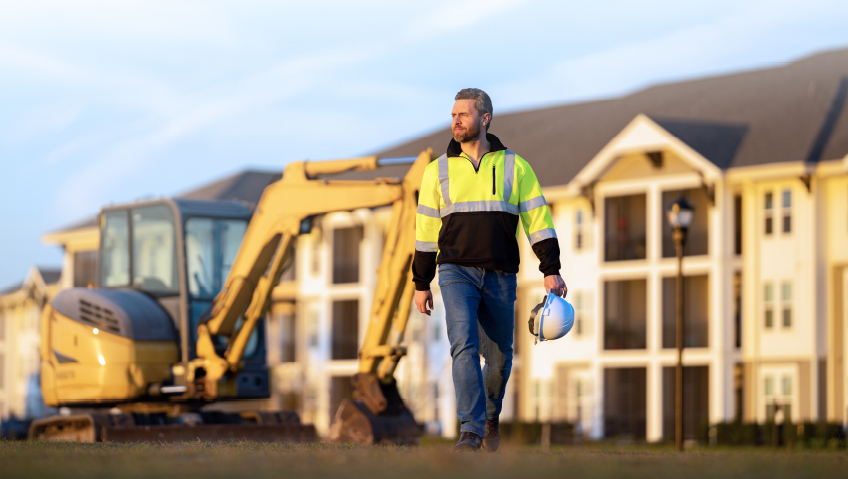For nearly 100 years, greater accessibility for all has been at the centre of everything Garaventa Lift does…
For centuries, cutting down and moving heavy logs through the Swiss Alps was a dangerous, labor-intensive endeavour. But in 1928, founder Karl Garaventa Sr., who worked as a logger, and several engineers developed ropeways that allowed workers to transport logs over difficult mountain terrain faster and more efficiently and safely.
Sons Karl Garaventa Jr. and Willy, like their father before them, were intrigued by technology and finding solutions, and took over the family business in 1956. In the ’60s, the company undertook its first international project in Egypt in 1964—a crane carried by cable over the Nile, and expanded into aerial tramways. Expanding into the U.S. and Canada, by the late ’70s, the company was hard at work creating innovative solutions such as Stair Lifts, which brought accessibility to places it hadn’t been before. Growing robustly, Garaventa Lift was acquired by Savaria in 2018, becoming a publicly listed company.
In 2008, Garaventa Lift expanded its emphasis on accessibility to become a global leader in home elevators. Maintaining the spirit of the company’s early log-moving products, Garaventa Lift has made its name synonymous with state-of-the-art, custom-made lift solutions, making the world and so many of its homes safer and more accessible.
“The Vietnam War generated a market for us because the Americans decided one should not discriminate against people with disabilities,” explains Vince Sciamanna, President of Garaventa Lift North America, Savaria Corp. “With the introduction of the Americans with Disabilities Act (ADA), a market was created for these small one-person cable cars, which became our wheelchair lifts of 50 years ago.”
With many soldiers returning home from the war with permanent physical or mental impairments, there was a need to provide them with equal opportunities, which saw the ADA signed into law in 1990.
Meeting accessibility needs
Providing four services essential to the North American way of life––residential accessibility, independent living, residential lifestyles, and public accessibility––Garaventa Lift researches, designs, manufactures, tests, installs, and maintains technologically advanced individual custom lift solutions.
“A passion for increasing the mobility and independence of people everywhere inspires us,” states the company, and its lifts are found in well over 100,000 private homes and public facilities everywhere, from office buildings to train stations, universities to places of worship.
At Garaventa Lift, all products are custom-made to order. “They may be made from pre-assembled components, but every lift is different,” says Sciamanna. “Most stairs are different; you have straight stairs, turning stairs, you have stairs with an intermediate landing, you install on the left side or the right side––there are too many variables for us to build these lifts straight from standard components and ship them out the next day.”
Yet even with custom-made lifts, Garaventa Lift has one of the shortest lead times in the world. Often, it is mere weeks from the day that a mechanic measures a home to the installation of a completed stair lift.
Every installation unique
Depending on customer requirements and specifications, home elevator designs also differ. Homeowners may require two, three, or four-level elevators. Then there are left or right door configurations, and different heights and sizes. Some architects prefer a classic, contemporary look, while others incorporate glass elements to showcase the elevator. “That’s why home elevator cabins are all made to order, so we’re ready to build any home elevator in a short time,” says Sciamanna.
Sometimes, architects or builders are the drivers of the process. For renovations, parents may inquire because a child is in a wheelchair, or children may inquire about parents who want to age in place in their home instead of moving to a long-care facility. “The normal thing is that the home you live in is the safest place you can be––for yourself, your family, parents, and friends––so people are investing more in their homes, thinking about the modifications they need to make their home a suitable place to retire to, and so living longer in the home,” says Sciamanna.
He notes that a home elevator is just one element of a home design that is safe and accessible. Other elements including avoiding unnecessary steps, such as in sunken living rooms or the typical single step leading from a garage into a mudroom. The push for older persons to remain in their homes as long as possible increased during the COVID-19 pandemic, and architects are refining designs to boost home safety and access.
Sensitivity to clients
As well as the talents of its own factory-trained installation mechanics, Garaventa Lift has trained mechanics in all major cities worldwide, including appointed, certified, and trained elevator contracting companies.
This is one way in which Garaventa Lift stands apart from other companies. Elevator mechanics working in a public setting, such as a school or hotel, are typically not the ones who service private homes, mainly because they may not be aware of necessary protocols like donning shoe covers before entering a home. “Lifts require maintenance, and this is where interaction takes place between customer and mechanic,” Sciamanna explains.
“It’s the sensitivity point that comes into play when we are maintaining the lifts, which is critical,” he shares. “A lift that’s down in a public setting or hotel is a nuisance; a lift or elevator that’s down in your home can mean you can’t get in or out of your living room or bedroom. So, the requirements placed on our mechanics are quite elevated, because of the needs these lifts must meet.”
Sciamanna says the issue of sensitivity is highly dependent on leadership style. “I’ve been with the company for over 25 years and am passionate about creating an accessible world and giving back in the right way,” he says. “At the same time, we are a for-profit organization, a publicly traded company where quarterly results matter.”
Thus, with outstanding, carefully chosen dealer representatives and employees, Garaventa Lift operates seamlessly on both the professional and personal level to ensure customer satisfaction. “Originally a Swiss company, our core values include doing what we promise and doing so in a safe way, on time, with respect for the individual. Living our values is critical, and our responsibility is not only to our customers and employees but also to our business partners. We have lots of current customers––over 100,000––and they will attest to this.”
Modern solutions
To keep pace with demand, Garaventa Lift utilizes digital technologies. During the sales process––where team members work with architects, builders, and homeowners––2D and 3D drawings and models are created, explained, and reviewed online. From the installation standpoint, clients can connect to a call centre for mechanics to troubleshoot the process. Today’s lifts store information, which makes service and maintenance more efficient, and diagnostics are performed through a digital connection that can be provided through subject matter experts and the elevator itself.
“In terms of digitization, we have initiatives to adopt digital solutions to improve in two areas,” says Director, Sales & Marketing, Constantine Nip. “One is the product itself, and two is internally, to make ourselves more efficient.”
To promote Garaventa Lift, the company is active at trade shows, including membership in and participation at the International Builders’ Show, the world’s biggest annual light construction show. Also active online through its website and social media channels, the company is often featured in magazines where it showcases its products and remarkable history. “In terms of marketing, we not only have the mission of promoting Garaventa Lift but also the mission of promoting making the world a better place for accessibility,” says Nip.
Earlier this year, the company became the proud recipient of the Elevator World Ellies Award in the Best Supplier-Accessibility category, a clear indicator of the company’s dedication to clients and the industry.
A great believer in giving back, Garaventa Lift takes part in a program with Easter Seals, providing a lift for one person in need in Alberta. Additionally, the company is part of The Bourassa Savaria Foundation, which was created a decade ago to help people dealing with mobility challenges.
Ready for the future
With more of us living longer and wanting to remain in our homes as long as possible, Garaventa Lift is gearing up for the years to come. “By working with different suppliers and our sales team, we try to give a good estimate of our production needs on a 12-month rolling forecast,” says Sciamanna. “We estimate the market will double in the next five years, but it depends on the geographic location. In Arizona, for example, home elevators are not used a lot. That’s why we invested together with our partner to set up a showroom in Scottsdale, to showcase home elevators to people,” he explains.
“We expect that market will be extremely good for us in the next five years; it will probably double year over year. In a city like Vancouver or West Vancouver, every new home has a home elevator. So, we went there from a market where no lifts were being installed in homes––because there wasn’t an installation company, or the price range of home elevators versus home price was a bit too high. So, for various reasons, you will see a different growth rate in different cities.”
At the factory, Garaventa Lift is prepared for the future, and able to adapt accordingly.
“We run a lean manufacturing operation that can double its size––not overnight, but we don’t predict doubling to happen overnight. 10 to 15 percent growth year over year is what we are forecasting, depending on our activities in different cities, and they are all different.”






